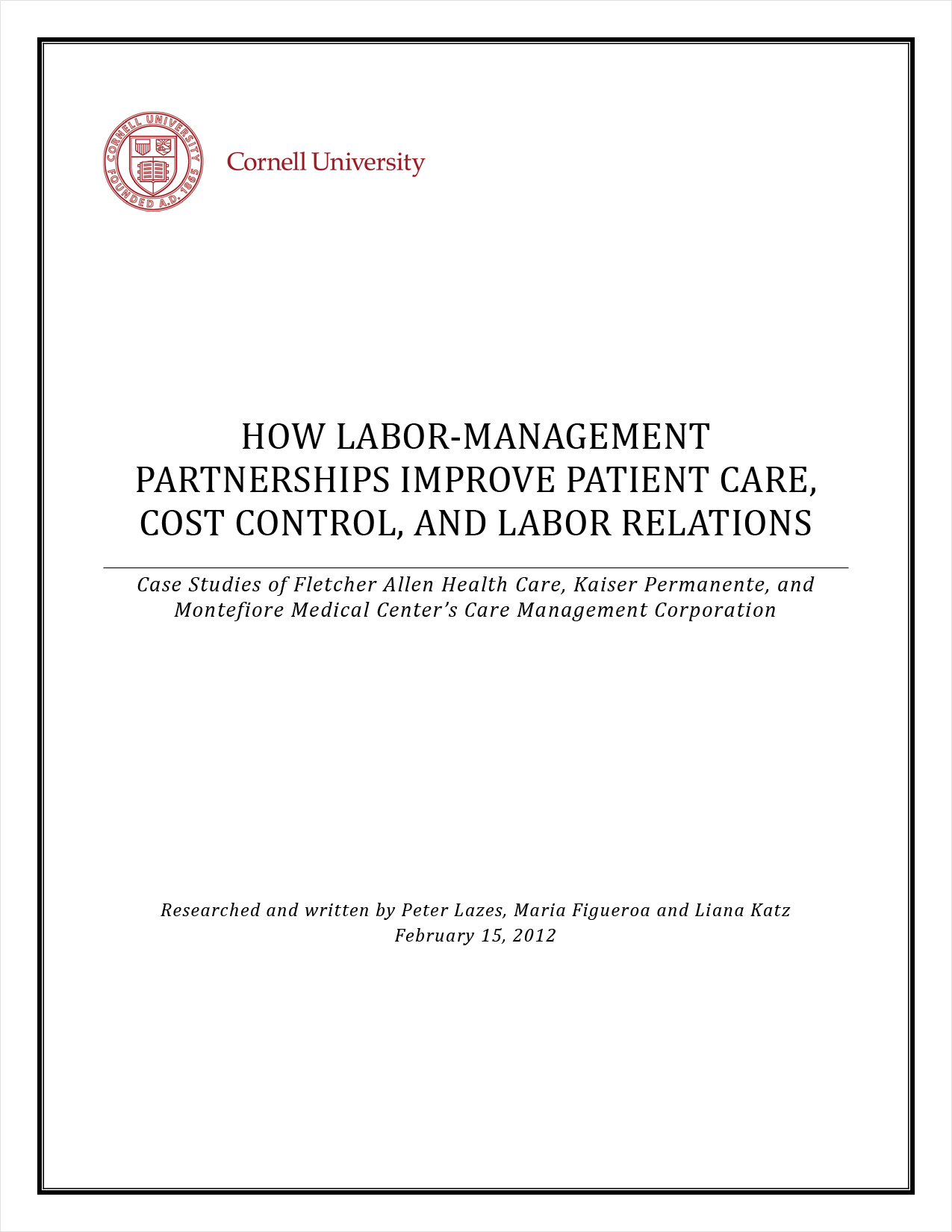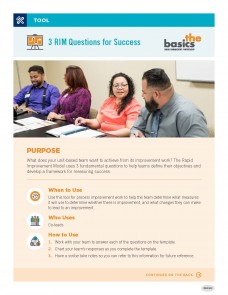Format:
PDF (15 or 3 pages)
Size:
8.5" x 11"
Intended audience:
UBT sponsors, co-leads and members; KP and union leaders
Best used:
To help unit-based team leaders and sponsors—and UBT members—better understand five elements that enable team performance and development.
Two options for reading:
- The 15-page study by Rutgers University, Johns Hopkins and Kaiser Permanente researchers identifies five key enablers of unit-based team performance and development: leadership; line of sight; team cohesion; processes and methods; and infrastructure and support. The report includes examples of successful team practices in each area. It includes an executive summary and conclusions.
- The 3-page executive summary of the study provides an overview of the findings, focusing on the five enablers of high performance. A good choice for those wanting a quick takeaway of these issues and for teams wanting to address issues raised by the study.







